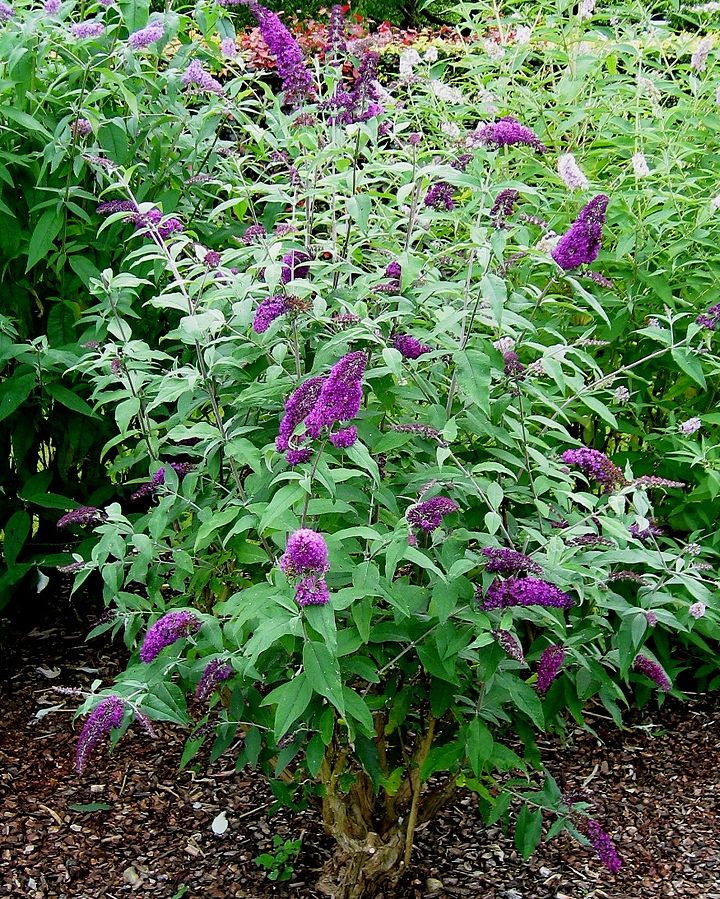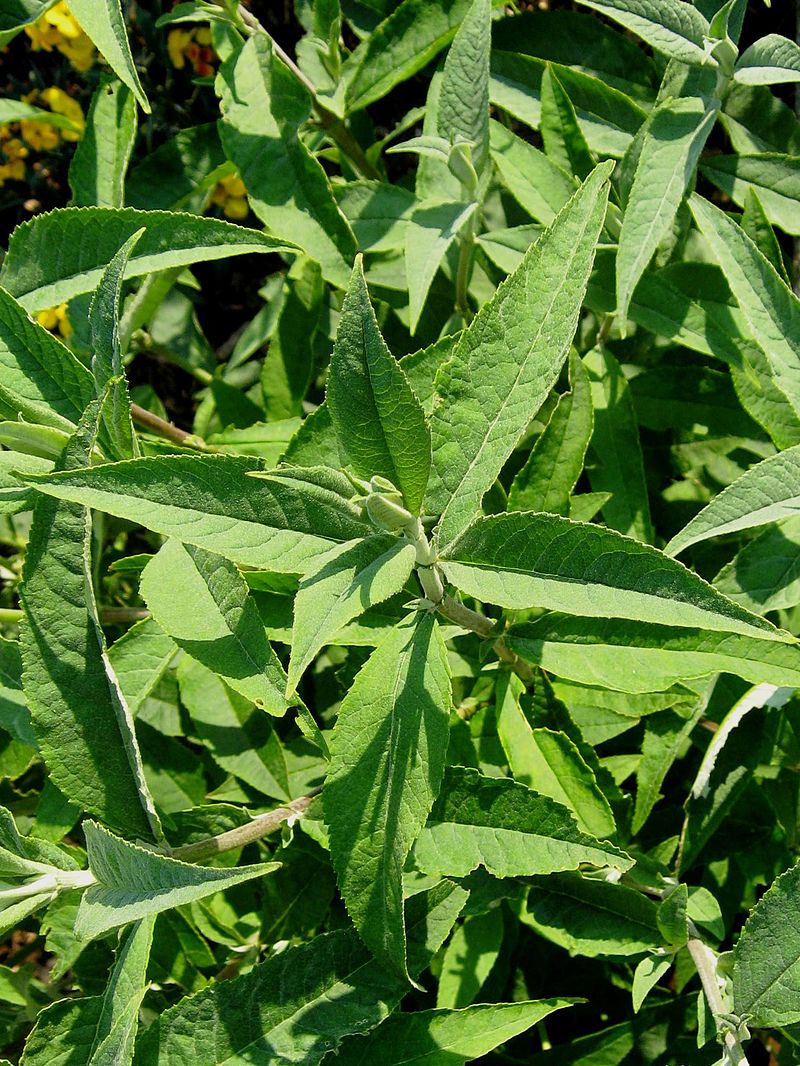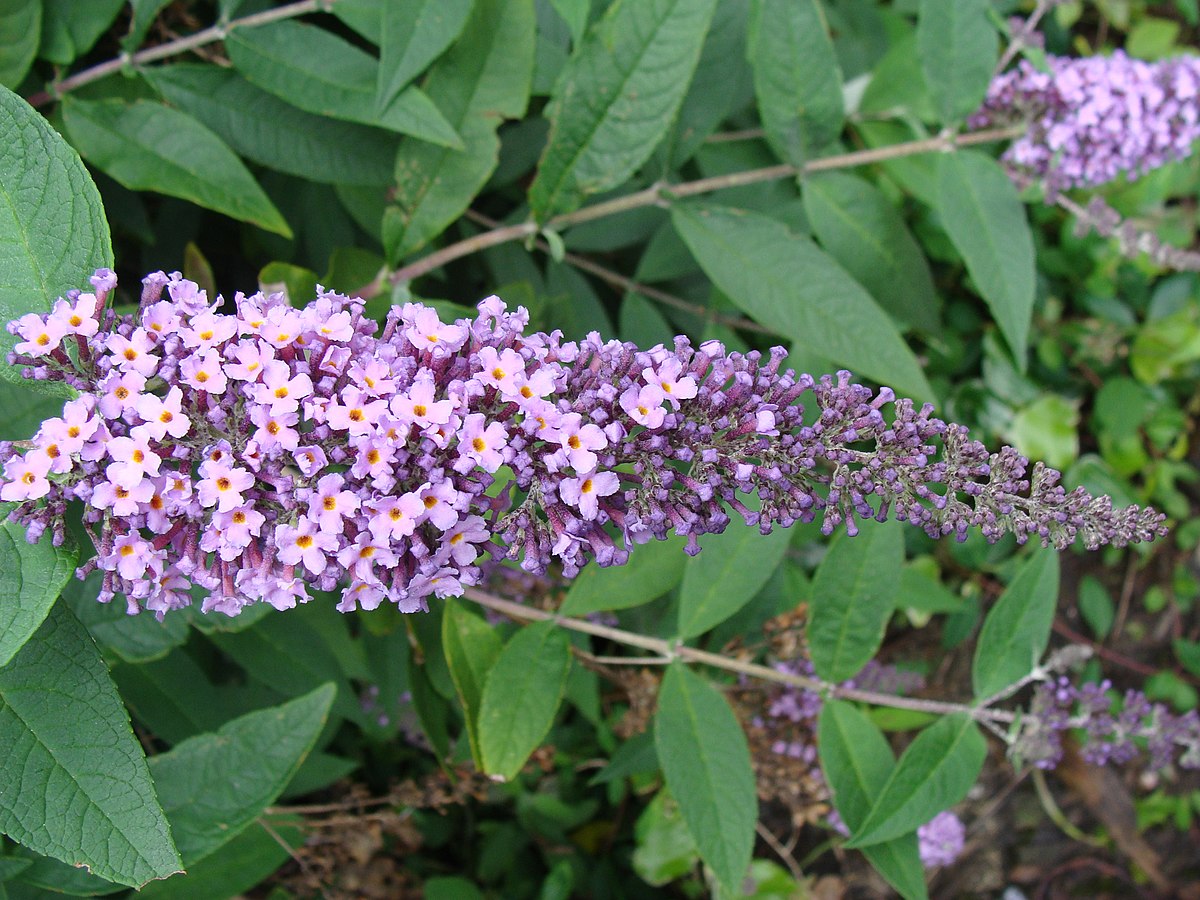Butterfly Bush

Butterfly Bush
(Buddleja davidii)
Priority: - Contain / Annual Control
Tags: Terrestrial
Identification and Reproduction
Identification:
- Butterfly bush is a deciduous to semi-evergreen shrub. It can grow to 5 m tall with over-arching branches.
- Young stems appear green but with maturity will develop into a grey-brown.
- Leaves are arranged oppositely and are slightly fuzzy and serrated. They are lance shaped and edges are serrated. Leaves can grow upto 25 cm long.
- Distinct showy flowers are clustered to form an upright or drooping spike-like shape. Butterfly bush flowers can bloom to be a range of purple.
Reproduction:
- Butterfly bush primarily reproduces via seeds. Seeds are mainly dispersed by wind during dry days, but they can also spread by water-dispersal (flowing through lakes and rivers).
- Germination rates of seeds can exceed 80%.
- Butterfly bush can produce asexually from plant parts.
Habitat & Ecology
- Frequently found on disturbed areas ranging from light shade to full sun. This plant can also withstand drought and low-nutrient sites.
Impacts
Ecological:
- Outcompetes native species and may alter riparian habitats.
- By displacing native plants this decreases the biodiversity and habitat for butterflies.
- Butterfly bush flowers might be a nectar source, but there are no North American native caterpillar that will feed on the leaves - this plant disrupts the butterfly life cycle and negatively impacts native vegetation and wildlife.
Management
Mechanical/Manual Control:
- Remove seed capsule before they ripen and produce seeds.
- Remove larger bushes by cutting the plant at the base.
- Dig up the stump if possible, or cover it with a thick plastic bag or mulch to prevent regeneration.
- Be sure to remove new shoots and stems to reduce re-establishment.
Chemical Control:
- Once butterfly bush has been cut, apply herbicide treatment to the cut base. A combination of mechanical and chemical control will prevent regrowth.
- Please follow all product and chemical labels prior to application.
For alternative planting options to butterfly bush, check out the ISCBC's Grow Me Instead brochure.
Resources
If you must grow a butterfly bush and are not able to try one of the native alternatives (ie. hardhack) - try to grow a sterile cultivar instead to prevent the proliferication of butterfly bush seeds. The State of Oregon has a list of sterile butterfly bush cultivars here.
For more control methods check out King County's page on Butterfly bush here. Note that this is a US site and Canadian guidelines and regulations may difffer. Please carefully read chemcial labels prior to use.
For further details on Butterfly Bush control please refer to the Metro Vancouver Best Management Practices for the Butterfly Bush (pg. 12-20)
Header photo (Ikai).
Photo Gallery











